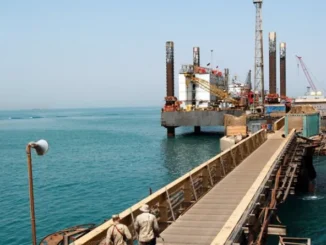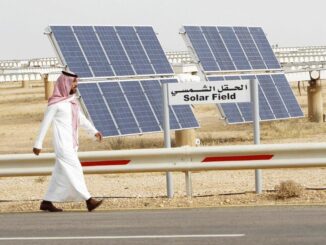
ENB Pub Note: This is an outstanding article from Irina Slav at Oilprice.com. She brings up some fantastic points, and for investors looking for returns, there is the precursor of an oil super-cycle looming. Stu has been a permabull, and this has all the warning signs of what to look for in investing in cycles. While Irina is mostly covering the oil side of it, the natural gas side is just as important. In the United States, we are exploring new ways to utilize Energy Exports as a Service, particularly as we anticipate more contracts potentially aligning with Russia, as Stu has noted. The world is waking up to the fact that wind, solar, and hydrogen cannot power the world in their current technical forms. And investors are looking for returns and not promises of climate devastation from Greta’s fear mongering.
- Rystad Energy warns that global oil supply could struggle to meet rising demand.
- Rystad: Reserve replacement from new projects is expected to cover less than 30% of production in the next five years.
- The slow, costly energy transition and underinvestment in exploration have led Big Oil and NOCs to refocus on oil and gas, with analysts warning another oil super-cycle may be needed after 2030.
Global oil supply at current rates may not be enough to meet rising demand if it grows at the pace expected by OPEC, according to the latest resource estimate by intelligence firm Rystad Energy.
Recoverable oil resources, including estimates for undiscovered fields, have stabilized at approximately 1.5 trillion barrels globally. However, in the most significant revision in resources over the last 10 years, Rystad Energy has lowered its estimate by around 456 billion barrels for yet-to-find resources.
That’s because frontier exploration has collapsed in recent years, offshore drilling and development costs have doubled so far this decade, and little shale success has been achieved outside the U.S., with the exception of a recent boom in Argentina’s Vaca Muerta play.
Reserve replacements from new conventional oil projects are expected to be less than 30% of production over the next five years, while exploration would replace only about 10% of reserves, Rystad Energy reckons.
Oil-producing countries, including the world’s top crude oil exporter Saudi Arabia and its state oil giant Aramco, have been warning for years that the decline in exploration investment and activity and the calls to ‘keep it in the ground’ would come to hurt future supplies and destabilize the market.
Exploration and new projects will be needed just to offset declining output from maturing fields, the industry says.
If OPEC’s bullish oil demand projections for the long term pan out, the world could face a supply crunch down the road, according to Rystad Energy.
“In a world with flat or growing demand after 2030, another oil super-cycle would be needed,” Artem Abramov, Deputy Head of Analysis at Rystad Energy, said.
“This scenario would require a substantial increase in frontier exploration and drilling success as well as accelerated deployment of secondary recovery and full-scale development of non-core shale plays in North America and globally.”
This scenario, of course, suggests oil demand will continue to grow in the medium and long term. That’s the view of OPEC and Saudi Aramco.
Other forecasters predict that oil demand could peak at some point in the early 2030s, but none expect consumption to fall off a cliff—demand will just plateau.
On the other hand, the energy transition has been constrained by high costs, supply chain issues, and government support and subsidies. It has become clear to everyone now that the transition will not be swift and will not go unnoticed by consumers in their energy bills.
“Reality has revealed a transition plan that’s been oversold and under-delivered for large parts of the world, especially Asia,” Saudi Aramco’s president and CEO, Amin Nasser, said at the Energy Asia 2025 event in June.
“We were told it would be rapid, painless, and inevitably mean the collapse of conventional energy. Yet oil demand still exceeds 100 million barrels per day, with no sign of collapsing,” Nasser added.
“There is no peak oil demand on the horizon,” OPEC Secretary General Haitham Al Ghais wrote in the foreword of OPEC’s latest World Oil Outlook (WOO), which sees global oil demand growing by about 19% from now until 2050 to reach 123 million barrels per day (bpd).
Many of the largest international oil firms see demand plateauing at some point next decade, while the IEA is doubling down on its narrative that a peak in global oil demand is still on the horizon.
Yet, Big Oil firms have also realized that the energy transition will be slower than initially expected and are boosting exploration to meet global oil demand in the coming years. The European majors BP and Shell have scaled back investments in renewables, shifted focus to oil and gas, again, and are now looking to bolster their oil and gas reserves portfolios.
“If future global oil demand increases, as forecast by OPEC, supply will likely struggle to meet demand, even at attractive, high prices for producers,” Rystad Energy said in its research on global recoverable resources.
Big Oil and national oil companies such as Saudi Aramco look to boost their resources, but years of underinvestment in exploration may have set the stage for a supply crunch in rising or plateauing oil demand in the coming decades.
Source: Oilprice.com Irina Slav
Is Oil & Gas Right for Your Portfolio?
Crude Oil, LNG, Jet Fuel price quote
ENB Top News
ENB
Energy Dashboard
ENB Podcast
ENB Substack






